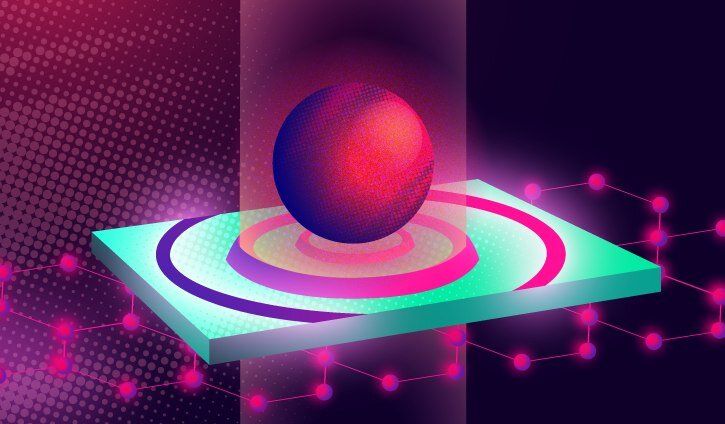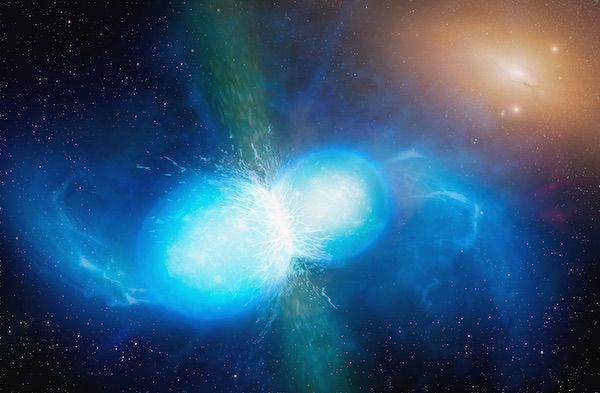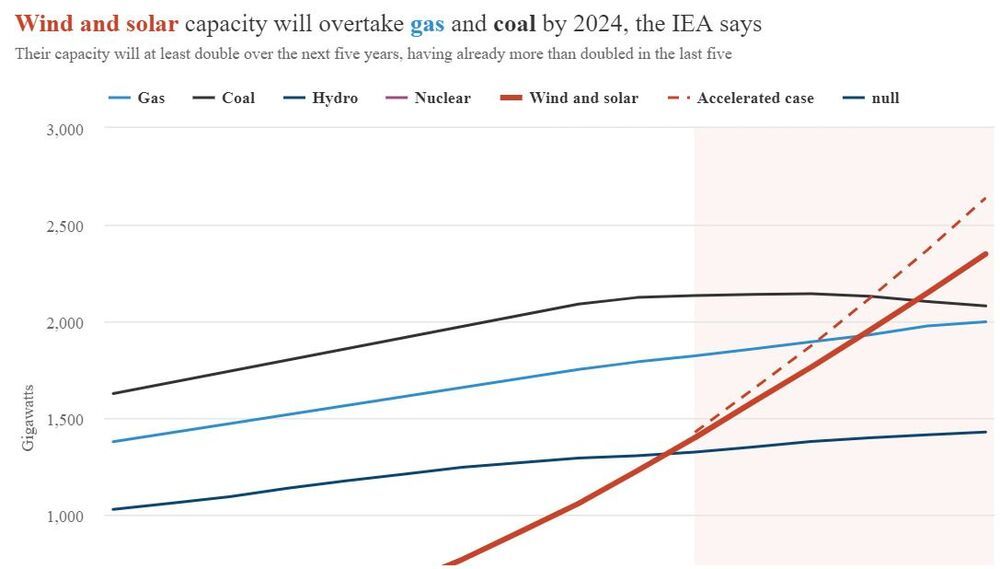It seems the rise of hydrogen as the clean fuel for the future is coming closer to reality.
A viable substitute for fossil fuels, hydrogen has been struggling to gain traction for years — but thanks to Europe, that could soon change.


O,.o.
Physicists from MIPT and Vladimir State University, Russia, have converted light energy into surface waves on graphene with nearly 90% efficiency. They relied on a laser-like energy conversion scheme and collective resonances. The paper was published in Laser & Photonics Reviews.
Manipulating light at the nanoscale is a task crucial for being able to create ultracompact devices for optical energy conversion and storage. To localize light on such a small scale, researchers convert optical radiation into so-called surface plasmon-polaritons. These SPPs are oscillations propagating along the interface between two materials with drastically different refractive indices—specifically, a metal and a dielectric or air. Depending on the materials chosen, the degree of surface wave localization varies. It is the strongest for light localized on a material only one atomic layer thick, because such 2-D materials have high refractive indices.
The existing schemes for converting light to SPPs on 2-D surfaces have an efficiency of no more than 10%. It is possible to improve that figure by using intermediary signal converters—nano-objects of various chemical compositions and geometries.

french start-up hy-generation has unveiled a new type of electric thruster, equipped with patented self-adjusting blades that improve the performance (thrust and speed) and autonomy of ships. dubbed the electro propulsion PM5kW, this top class electric thruster has been designed essentially for OEM and electric project conversion, suitable for licenseless navigation.
developed to meet the need for expertise and engineering on technologies that profoundly change the energy landscape: fuel cells and hydrogen, hy-generation integrates the latest practices in permanent magnet electric motors with the patented self-adjustable blade system to set a new standard in terms of performance and efficiency. after two years of development, the technology has been refined to be adapted to slow, high displacement boats.

In a remote galaxy, two neutron stars circled one another in a ballet of ultimate destruction and inevitable creation. Both objects were the remnants of massive stars, probably from a binary system, that had become supernovae long before. Each was incredibly massive, with neutrons so closely packed that their cores became diamond. The dance, alas, could not go on forever and the stars collided, releasing unimaginable energy and sending gravitational waves speeding through the fabric of space-time.
In 2017, 1.3 billion years later, astronomers detected those waves with the Laser Interferometer Gravitational-wave Observatory. Albert Einstein’s prediction that the universe should be filled with such faint ripples caused by gravity from massive objects included sources such as neutron star mergers. Yet finding a disturbance in the fabric of space-time from this kind of event had proven elusive until then. When news of the detection of gravitational waves broke, the media wanted to know what else happens when neutron stars collide. Astronomers explained that, beyond the destruction of the stars and the ripples in space, such events also create all the heavy elements we know in the blink of an eye. But what did the media key into? That gold comes from outer space.

Orenco Systems AdvanTex AX-Mobile
For more than a decade, Orenco’s AdvanTex® technology has provided a reliable, energy-efficient alternative for wastewater treatment in some of the world’s most remote places. The AdvanTex is Orenco’s most portable treatment plant yet. Think of it as a “mini” onsite treatment facility, ready to go wherever you need it.


A new report by the International Energy Agency has shown that wind and solar capacity will likely exceed coal and gas in less than five years.
Wind and solar capacity will double over the next five years globally and exceed that of both gas and coal, according to a new International Energy Agency (IEA) report.
The Paris-based intergovernmental agency anticipates a 1,123 gigawatt (GW) increase in wind and solar that would mean these power sources overtake gas capacity in 2023 and coal in 2024.
The world needs clean heat, and geothermal energy has it.
On Earth, amethysts can form when gas bubbles in lava cool under the right conditions. In space, a dying star with a mass similar to the Sun is capable of producing a structure on par with the appeal of these beautiful gems.
As stars like the Sun run through their fuel, they cast off their outer layers and the core of the star shrinks. Using NASA’s Chandra X-ray Observatory, astronomers have found a bubble of ultra-hot gas at the center of one of these expiring stars, a planetary nebula in our galaxy called IC 4593. At a distance of about 7,800 light years from Earth, IC 4593 is the most distant planetary nebula yet detected with Chandra.
This new image of IC 4593 has X-rays from Chandra in purple, invoking similarities to amethysts found in geodes around the globe. The bubble detected by Chandra is from gas that has been heated to over a million degrees. These high temperatures were likely generated by material that blew away from the shrunken core of the star and crashed into gas that had previously been ejected by the star.

MIT researchers have developed a new material inspired by camel fur made from two layers that can keep perishable goods cool without needing any power. The two-layer passive cooling system is made of hydrogel and aerogel. Researchers say that it can be used to keep foods or pharmaceutical cool for days without needing electricity.
The material can be seen in the photo above, its top layer is aerogel, and the bottom layer is a hydrogel. Material is inspired by camel fur, which helps keep the animals cool and helps them to conserve water in the scorching desert environment. It seems counterintuitive that a thick coat of fur would help camels to stay cool, but tests have shown that a shaved camel loses 50 percent more moisture than an unshaved one under ideal conditions.
The bottom layer of MIT’s material is a substitute for sweat glands made of hydrogel. This gelatin-like substance is mostly water contained in a sponge-like matrix that allows the water to evaporate easily. The upper aerogel layer plays the part of the fur, keeping out external heat while allowing the vapor to pass through. Hydrogels have been used for cooling applications in the past. Field tests have found that MIT’s material can provide cooling of more than seven degrees Celsius for five times longer than hydrogel alone despite being less than half an inch thick.